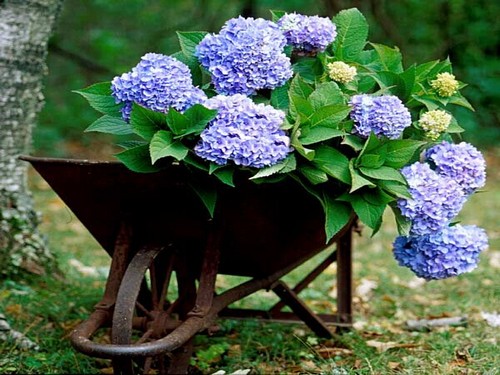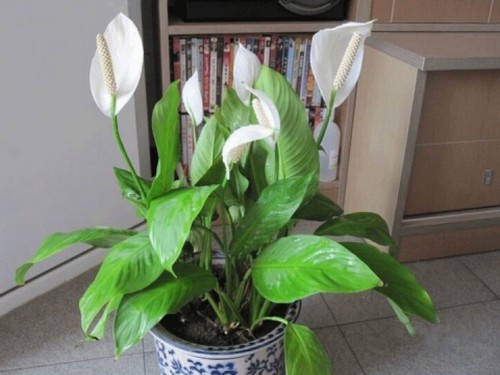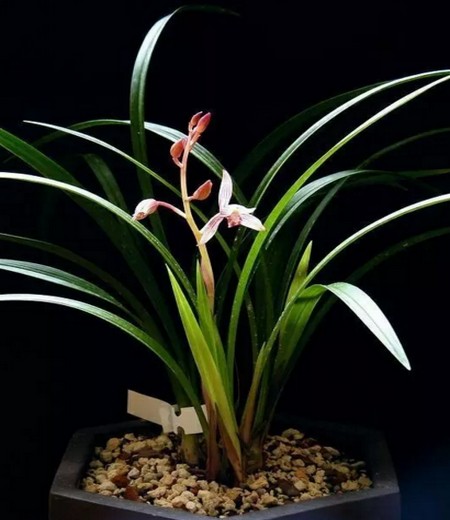The cultivation methods and precautions of potted hydrangea
Hydrangea, as an important flower and tree in summer, is planted under sparse forest trees, ornamental at the edge of the road, and potted plants can be placed in the courtyard and balcony. So how is hydrangea raised? Is there any good method in breeding? What matters do you need to pay attention to in breeding hydrangea? Please read on with me with questions.

Methods of reproduction:
Cuttings, ramets, striping and grafting are commonly used for propagation, mainly cuttings. During the Meiyu period, strong twigs on young mother trees can be selected as cuttings, with nodes at the base of cuttings, stained with mud, about 20 cm long, and the lower leaves can be removed.
The main results are as follows: 1. The suitable temperature of cutting is 1 3-18 ℃, shade is needed after cutting, it is often kept moist, rooting takes place in about 15 days to 1 month, and it can be transplanted in the second year after survival.
2. Ramet propagation should be carried out before sprouting in early spring. Separate the rooted branches from the mother plant, pot directly, watering should not be too much, maintain in the semi-shady place, wait for new buds to sprout and then transfer to normal maintenance. Striping propagation can be carried out during bud germination, grow after 30 days, cut off from the mother plant in the following spring, transplant with soil, and blossom in the same year. In general, high pressure is carried out from March to April in spring, and it can take root from June to July, and it can be cut and planted in the same year.
3. Grafting propagation uses Qionghua seedlings as rootstocks, which can be cut in spring and easy to survive. Transplanting should be carried out after defoliation or before budding. The main branch is easy to sprout and grow, and it needs to be pruned properly after flowering to shape the tree.
Culture methods:
1. Soil: loose, fertile and well-drained sandy loam is the best soil for hydrangea planting. However, the flower color is affected by soil acidity and alkalinity, acidic soil flowers are blue and alkaline soil flowers are red. The slightly acidic light soil, which needs to be fertile, loose, well drained and moisturized, can be mixed with rotten leaf soil, garden soil and vinegar residue at the ratio of 2: 2:1, and then add appropriate amount of mature organic fertilizer.
2. Watering: the potted soil planted with hydrangea should be kept moist, but it should not be watered too much, especially in the rainy season to prevent rotting roots caused by waterlogging. It is better to dry indoor potted plants in winter. If it is too wet, the leaves will rot easily. It is necessary to pour more water when changing the basin in spring or after re-cutting, and control the amount of water after the new buds germinate. In summer, water should be irrigated once every morning and evening, and water should be sprayed on the leaf surface and around the basin every day to increase air humidity, reduce plant evaporation and reduce temperature. During the rainy season, watering should be reduced and the stagnant water in the basin should be poured out in time; watering should be controlled after late autumn; and the basin soil should be kept 30% wet in winter.
3. Lighting: Hydrangea is a short-day plant, usually cultivated to avoid the hot sun, 60% to 70% shade is the most ideal. When the light is too strong in midsummer, proper shading can prolong the flowering period.
4. Temperature: the optimum temperature for the growth of hydrangea is 18-28 ℃, and the winter temperature is not lower than 5 ℃. Flower bud differentiation takes 6-8 weeks under the condition of 5-7 ℃. The temperature of 20 ℃ can promote flowering, maintain 16 ℃ after anthesis, prolong the viewing period, and pay attention to the rapid discoloration of flowers caused by high temperature.
5. Fertilization: the flowering period of hydrangea is from June to July, the fertilizer and water should be sufficient during the flowering period, and fertilize once every semimonthly. During the growth period, 1 ferrous sulfate was added with rotten organic fertilizer every 2 weeks, and 2% potassium dihydrogen phosphate was added during bud fertilization. Fertilizer should be applied in time after flowering.
6. Turning the basin: it is necessary to turn the basin every 1 ~ 2 years in early spring (mid-March), remove part of the old soil, cut off the rotten roots and old roots, add the newly configured culture soil, and make appropriate pruning. Turn the pot and put the plant in the shade for about 10 days, and then gradually see the light to enter the normal maintenance and management.
7. Pruning: after Hydrangea blossoms, attention should be paid to the removal of flower stems to promote the production of new branches. Proper pruning can keep the plant shape graceful. When the seedlings grow to 15 cm high, the coring is carried out; after the axillary buds germinate, 4 new branches in the middle and upper parts are retained, and the rest are all trimmed; when the 4 new branches grow to about 10 cm, the coring is carried out for the second time. After waiting for the flowers to fade, the branches will be shortened in time, and each branch will retain 2-3 buds, and then pick the heart when the new shoot grows to 10 centimeters, so that the top of the new shoot will be cut off after autumn.
8. Insect pests: Hydrangea is mainly caused by wilt, powdery mildew and leaf spot. Spray control with 65% Dysen zinc wettable powder 600 times solution. Insect pests are harmful to aphids and bug bugs and can be sprayed with 1500 times of omethoate EC.
Note:
Watering points: hydrangea planting basin soil should be kept moist, but watering should not be too much, especially in the rainy season to pay attention to drainage to prevent root rot caused by waterlogging. It is better to dry indoor potted plants in winter. If it is too wet, the leaves will rot easily.
Fertilizer application: the flowering period of hydrangea is from June to July, the fertilizer and water should be sufficient during the flowering period, and fertilize once every semimonthly.
Pruning essentials: after hydrangea flowering, we should pay attention to remove the flower stem, promote the production of new branches, proper pruning, can keep the plant shape beautiful.
Pot soil replacement: potted hydrangea flowers, generally turn the pot to change soil once a year. It is appropriate to turn the basin and change the soil in the first ten days of March. When changing pots, it is necessary to prune the roots of the plant, cutting off rotten roots, rotten roots and overlong roots. After the plant is moved into the new pot, the soil should be compacted, watered and placed in a shaded place for about 10 days, and then moved outside for normal management.
Time: 2019-06-01 Click:
- Prev

How to maintain white palm
White palm is an expert in suppressing exhaust gases such as ammonia and acetone exhaled by the human body. It can also filter benzene, trichloroethylene and formaldehyde in the air. Its high evaporation rate can prevent dryness of nasal mucosa, greatly reduce the possibility of disease, and blossom all the year round, flowering for more than four months, so it is an ideal indoor flower.
- Next

Culture methods and matters needing attention of potted sword orchid
Sword orchid, the scientific name is Gladiolus, belongs to the bulbous plant of Cucurbitaceae, the original species is native to South Africa. The flower stem is higher than the leaf, and the Corolla tube is in the shape of an expanded funnel, and the flower colors are red, yellow, purple, white, blue and other monochrome or multi-color varieties. It is widely cultivated all over the world. So, is the sword orchid easy to raise? What are the breeding methods?
Related
- Fuxing push coffee new agricultural production and marketing class: lack of small-scale processing plants
- Jujube rice field leisure farm deep ploughing Yilan for five years to create a space for organic food and play
- Nongyu Farm-A trial of organic papaya for brave women with advanced technology
- Four points for attention in the prevention and control of diseases and insect pests of edible fungi
- How to add nutrient solution to Edible Fungi
- Is there any good way to control edible fungus mites?
- Open Inoculation Technology of Edible Fungi
- Is there any clever way to use fertilizer for edible fungus in winter?
- What agents are used to kill the pathogens of edible fungi in the mushroom shed?
- Rapid drying of Edible Fungi

